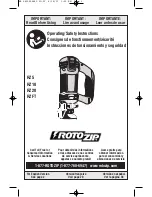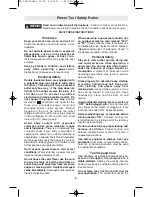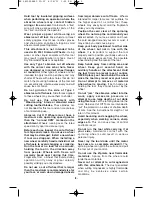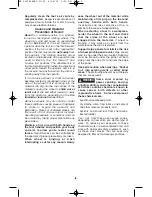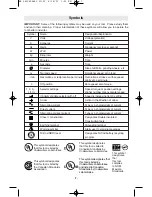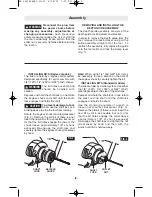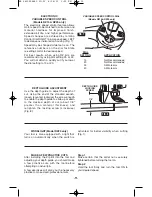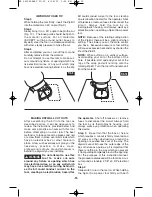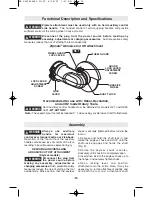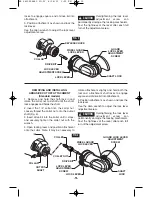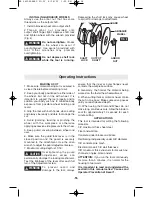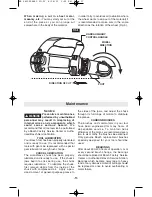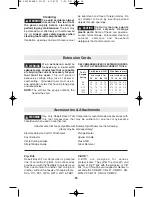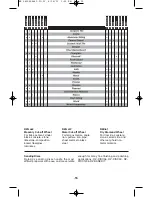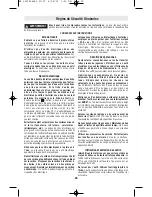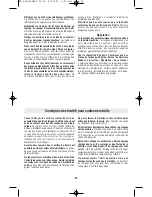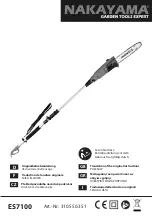
-6-
Regularly clean the tool’s air vents by
compressed air. Excessive accumulation of
powdered metal inside the motor housing
may cause electrical failures.
Causes and Operator
Prevention of Recoil:
Recoil is a sudden reaction to a pinched,
bound or misaligned rotating wheel. The
wheel may stall and cause an uncontrolled
tool to back out of the kerf toward the
operator when the tool is in the “fire forward”
position, if the tool is set in the “reverse fire”
position the tool may tend to walk away from
the operator. The rotation direction arrow
located on the back side of the guard can be
used to identify the “fire forward” and
“reverse fire” positions. The attachment is in
the fire forward position when the directional
arrow points toward the operator, and it is in
the reverse fire position when the arrow is
pointing away from the operator.
If an abrasive wheel or diamond wheel
becomes twisted or misaligned in the cut, the
side of the wheel that is entering into the
material can dig into the top surface of the
material causing the wheel to climb out or
recoil out of the kerf either toward or away
from the operator, depending on the fire
forward or reverse fire orientation.
Abrasive wheels may also shatter under
these conditions causing pieces or fragments
to strike or impale the operator and
bystanders. Recoil or shattered wheels are
the result of tool misuse and/or incorrect
operating procedures or conditions and can
be avoided by taking proper precautions as
given below:
Maintain a firm grip with both hands on
the tool handles and position your body
and arm to allow you to resist
recoil
forces.
Recoil forces can be controlled by
the operator, if proper precautions are taken.
When wheel is binding, or when
interrupting a cut for any reason, slowly
ease the wheel out of the material while
maintaining a firm grip on the tool and
auxiliary handle with both hands.
Investigate and take corrective action to
eliminate the cause of wheel binding.
When restarting a tool in a workpiece,
center the wheel in the kerf and check
that the sides of the wheel are not
engaged into the material. If wheel is
binding, it may walk up or
recoil from the
workpiece as the tool is restarted.
Support large panels to minimize the risk
of wheel pinching and
recoil. Large panels
tend to sag under their own weight. Supports
must be placed under the panel on both
sides, near the line of cut and near the edge
of the panel.
Use extra caution when making a “Pocket
Cut” into existing walls or other blind
areas. The protruding wheel may cut objects
that can cause
recoil.
Some dust created by
power sanding, sawing,
grinding, drilling, and other construction
activities contains chemicals known to
cause cancer, birth defects or other
reproductive harm. Some examples of
these chemicals are:
• Lead from lead-based paints,
• Crystalline silica from bricks and cement
and other masonry products, and
• Arsenic and chromium from chemically-
treated lumber.
Your risk from these exposures varies,
depending on how often you do this type of
work. To reduce your exposure to these
chemicals: work in a well ventilated area, and
work with approved safety equipment, such
as those dust masks that are specially
designed to filter out microscopic particles.
!
WARNING
RZ 2610954840 07-07 8/16/07 3:55 PM Page 6

